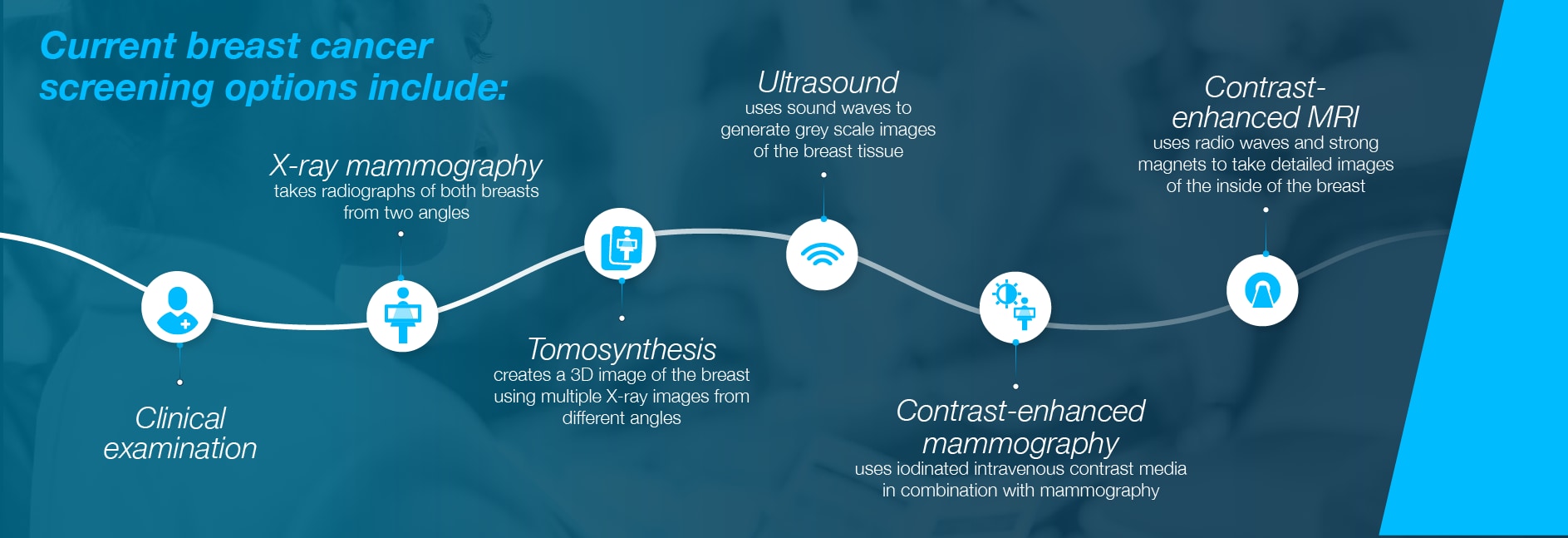Breast Cancer – Risk Factors and Diagnosis Methods

Breast cancer is the most common type of cancer among women globally and – according to the WHO – impacts 2.1 million women each year. Early detection is crucial to improve the course of the disease.
The outlook for patients diagnosed with breast cancer has been changing for the better over time, with significant progress coming through in the past decades. Still, despite medical advances, breast cancer causes the greatest number of cancer-related deaths among women. In 2018, it is estimated that 627,000 women died from breast cancer – that is approximately 15% of all cancer deaths among women.1 Diagnosing the disease early and getting state-of-the-art treatment are the most important strategies to save the lives of patients: More than 90% of women diagnosed at the earliest stage survive their disease for at least 5 years compared to around 15% for women diagnosed with the most advanced stage of disease, according to Cancer Research UK.2
Prevention and Detection
The risk to suffer from breast cancer increases with age: Most breast cancers are found in women age 55 and older.3 About 5% to 10% of breast cancer cases are thought to be hereditary. In these cases, the risk of getting cancer is drastically increased by a genetic change (mutation) passed on from a parent.4
Another risk factor is breast density. Dense breasts have relatively high amounts of glandular tissue and connective tissue and relatively low amounts of fatty breast tissue. Nearly half of all women age 40 and older who get mammograms are found to have dense breasts.5 Breast density is often inherited, but other factors can influence it, and it impacts both breast cancer risk and the accuracy of a mammography screening test.
Women with dense breasts have a higher risk of breast cancer than women with fatty breasts. The risk rises with increasing density.6 Also, mammograms can be harder to read in women with dense breasts,7 which means cancer is more likely to be missed or found later in advanced stages. Therefore, breast density is an important risk factor for HCPs to consider when deciding whether a patient should have additional screening examinations.
Diagnosis and breast cancer screening options
The most common symptom of breast cancer is a new lump or mass, but other symptoms are also possible. Any change in breast tissue should be checked by a health care provider. However, many women with breast cancer have no symptoms. This is why regular self-examination and breast cancer screening are so important, especially for women at high risk.
Different tests can be used to look for and diagnose breast cancer. If a doctor detects an area of concern on a screening test (a mammogram), or if there are symptoms that could mean breast cancer, usually more tests will be needed to get an accurate diagnosis.
Advice for patients
Perform breast self-exam and take preventive medical checkups. If you have any questions, please contact your doctor.





















